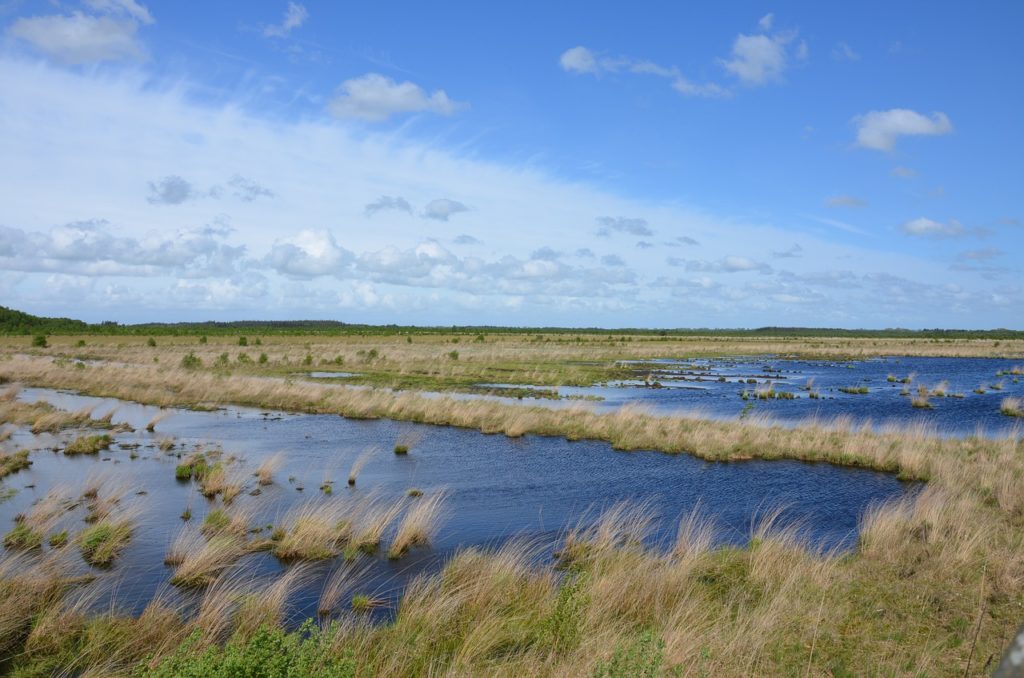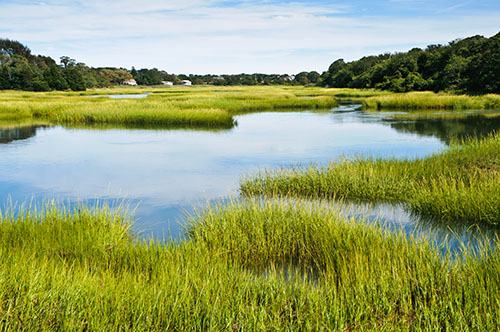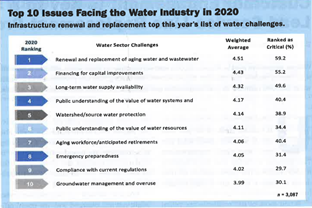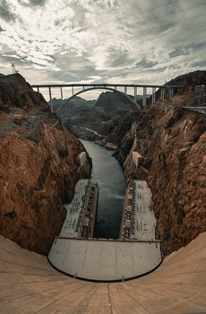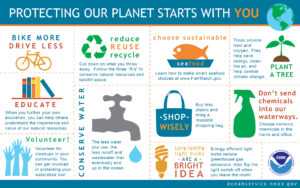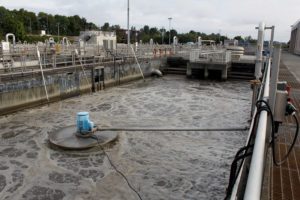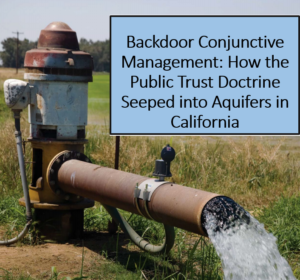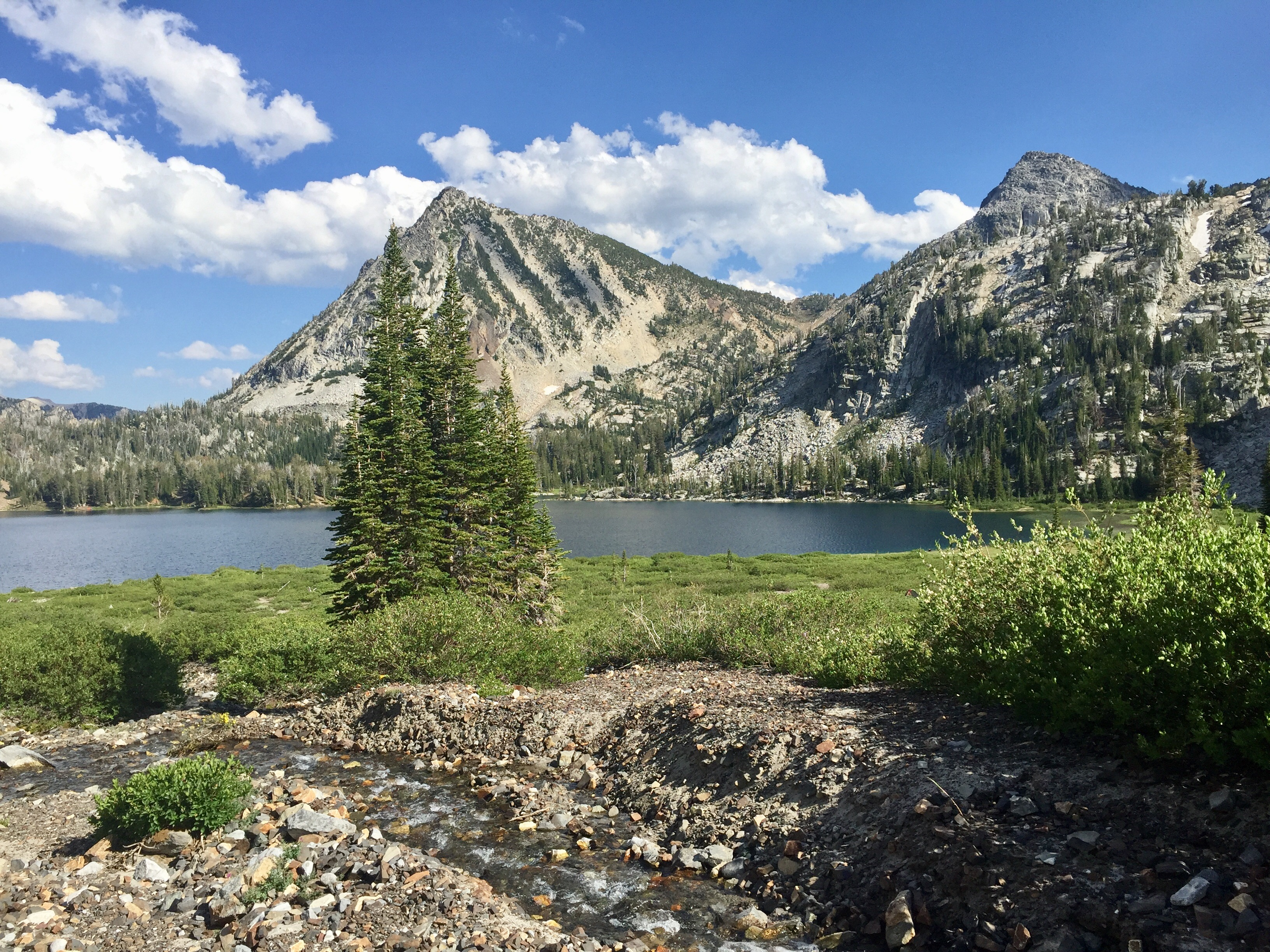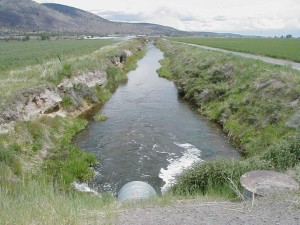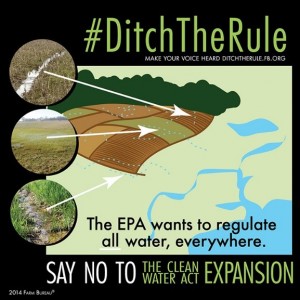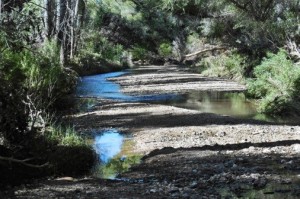Turbid Waters: The Interaction Between Interbasin Transfer and the Clean Water Act
By Laura A. Schroeder and Kendall A. Woodcock
Introduction:
In Nevada, large scale interbasin transfer of water from rural areas is increasingly seen as a solution to the problem of dwindling water supply and steadily rising urban demand. Whether such interbasin transfers are subject to permit requirements under the federal Clean Water Act (“CWA”) has major implications for the environment and the ability of municipal suppliers to secure additional water supplies. Because of the vast scale of these projects and the number of competing, yet important, interests at stake, the treatment of interbasin transfers under the CWA is a hotbed of controversy.
Environmentalists’ concern is that terrestrial and aquatic habitats may be destroyed if CWA permitting requirements do not apply to interbasin transfers. In contrast, water users, particularly municipal suppliers and irrigators, argue that applying the CWA permitting requirements to all interbasin transfers will jeopardize desperately needed water supplies, place an extreme burden on the administrative bureaucracy, and come with an astronomical economic cost.
Unfortunately, the law surrounding the treatment of interbasin transfers under the CWA is in flux, and the uncertainty poses a problem for both environmentalists and water users. This article seeks to explore the controversial interaction between interbasin transfers and the federal CWA. Ultimately, this article will propose that state law presents the best means of addressing the parties’ concerns while providing a stable legal framework in the interim.
Interbasin Transfers: An Overview
An interbasin transfer occurs when water, either surface or groundwater, is moved from the basin of origin to another basin. A “basin,” (also called a “drainage basin,” “watershed,” or “hydrographic region”) is a geographic area drained by a single major stream. A basin can also be a drainage system area comprised of streams or lakes. The state of Nevada, for example, is comprised of 14 major “hydrographic basins,” which are further subdivided into 232 “hydrographic areas or sub-areas.”
Many of the interbasin transfers being litigated and discussed in the media involve large scale projects designed to convey water from rural areas to cities for municipal use. However, interbasin transfers are not necessarily large in scale, nor do they always involve a change in use.
Regardless of their scope and nature, all interbasin transfers raise serious concerns about water quality and the environment. Removing water from the originating basin may cause water table lowering, instream flows reduction, aquatic habitat degrading, subsidence, and soil erosion. Additionally, interbasin transfers involve the mixing or co-mingling of diverse water sources. In other words, any sediments or pollutants present in the originating waters will be transferred to the receiving waters unless regulations dictate water treatment.
The following sections describe the Clean Water Act framework created to address water quality concerns and the application of that framework to interbasin transfers.
The Clean Water Act: An Overview
The CWA was intended to “restore and maintain the chemical, physical, and biological integrity of the Nation’s waters.” 33 U.S.C. §1251(a). Toward that end, the Act makes the “discharge of any pollutant by any person” into “navigable waters” from any “point source” without a National Pollutant Discharge Elimination System (NPDES) permit unlawful. 33 U.S.C. §1311(a)-(e).
The important terms, as defined by the CWA, include:
- “Discharge of a pollutant” means “any addition of any pollutant to navigable waters from any point source.”
- “Navigable waters” means “the waters of the United States.”
- “Pollutant” means “dredged spoil, solid waste,… chemical wastes, biological materials, radioactive materials, heat,… sand,… and industrial, municipal, and agricultural waste discharged into water.”
- “Point source” means “any discernible, confined and discrete conveyance, including but not limited to any pipe, ditch, channel, tunnel, conduit, well, discrete fissure, [or] container…from which pollutants are or may be discharged.”
See 33 U.S.C. §1362.
To simplify the issues, commentators often break the problem down into its component parts. For an NPDES permit to be required under the Act, one must establish that there has been (1) an “addition” (2) of a “pollutant” (3) to “navigable waters” (4) from any “point source.” The following discussion illustrates that the crucial inquiry for interbasin transfers centers on whether the transfer amounts to an “addition” of pollutants.
Federal Case Law & Regulations: An Uncertain Future for Interbasin Transfers
The Miccosukee Tribe of Indians
In a 2004 case, South Florida Water Management District v. Miccosukee Tribe of Indians, 541 U.S. 95, (“Miccosukee”), the Supreme Court was asked to decide whether an “addition” of a pollutant “from a point source” occurred when a water management district pumped polluted waters from a drainage canal (basin 1) into an undeveloped wetland impoundment area (basin 2).
The South Florida Water Management District (“the District”) argued that it was not subject to the NPDES permit requirements. First, the District contended that the NPDES program applies to a point source only when a pollutant originates “from” the point source, not when pollutants originating elsewhere merely pass through the point source, as was the case here. Secondly, the District argued that the canal and wetland impoundment area are not distinct water bodies, but actually hydrologically indistinguishable parts of a single water body, thus there was no “addition” of a pollutant from one body of water to another.
The Supreme Court ruled against the District as to the first argument and remanded the second argument for further factual development. Specifically, the Court held that the CWA “makes plain that a point source need not be the original source of the pollutant; it need only convey the pollutant to ‘navigable waters’.” Miccosukee, 541 U.S. at 105. The Court cited the CWA’s broad definition of “point source,” concluding that the District’s first argument was “untenable” as it would exempt municipal waste water treatment plants from regulation under the CWA, when a primary goal of the CWA is to impose NPDES permitting requirements on such waste plants. Miccosukee, 541 U.S. at 105 (citing 33 U.S.C. §1311(b)(1)(B)).
With regard to the District’s second argument, the Court agreed that an NPDES permit would not be required if the two bodies of water were not “meaningfully distinct,” but found that there was insufficient evidence in the record to make such a determination. Miccosukee, 541 U.S. at 112.
Before remanding the case, the Court briefly addressed but did not rule on a new argument put forth by the Government as amicus curiae on appeal: the “unitary waters theory.” This theory suggests that all water bodies falling within the definition of “navigable waters” should viewed as a whole for the purposes of determining whether there has been “any addition of any pollutant to navigable waters from any point source.” In other words, according to the Government, once a pollutant is present in one part of the “waters of the United States,” the conveyance to a different part is not a “discharge of a pollutant” within the meaning of the Act. See Brief for the United States as Amicus Curiae Supporting Petitioner at 19,South Florida Water Management District v. Miccosukee Tribe of Indians, 541 U.S. 95 (2004)(No. 02-626), 2003 WL 22137034.
The “unitary waters theory” remains an open question. Likewise, the question remains as to whether interbasin transfers from one navigable body of water to another trigger the NPDES permit requirements under CWA. At most, the Court acknowledged evidence for both sides of the theory.
EPA’s Water Transfers Rule
In response to Miccosukee, the EPA adopted a Water Transfers Rule that exempts water transfers, defined as “activity that conveys or connects waters of the United States without subjecting the transferred water to intervening industrial, municipal, or commercial use” from the NPDES permit requirement. NPDES Water Transfers Rule, 73 Fed. Reg. 33,697, 33,708 (June 13, 2008)(codified at 40 C.F.R. 122.3(i) (2010)).
EPA offered several rationales for the rule. First, the absence of the word “any” prior to the phrase “navigable waters” in the Act’s definition of “discharge of a pollutant” indicates Congress’ intent that NPDES permits would not be required for pollution caused by the engineered transfer of one “navigable water” to another. Second, the EPA contends that “Congress intended to leave primary oversight of water transfers to state authorities in cooperation with federal authorities.” 73 Fed. Reg. 33,697, 33,701 (June 13, 2008). The Government also expressed some concern that municipal supply networks might be put in jeopardy if permits were required for every engineered diversion and expensive treatment works were needed to comply with water quality criteria. See Miccosukee, 541 U.S. at 118.
Immediately after its enactment, the Water Transfers Rule was challenged by several environmental groups. To date,Friends of the Everglades v. South Florida Water Management District, 570 F.3d 1210 (11th Cir. 2009) is the only case directly addressing the validity of the Water Transfers Rule. In Friends of the Everglades, the Eleventh Circuit found the statute to be ambiguous, as “waters” can refer to either a single body of water or to several different bodies of water, and upheld the Water Transfers Rule as a reasonable interpretation of the Act under Chevron U.S.A., Inc. v. Natural Resources Defense Council, Inc., 467 U.S. 837 (1984). Friends of the Everglades, 570 F.3d at 1223.
It is not clear, however, that the Eleventh’s Circuit’s interpretation will ultimately prevail. In 2006, the Second Circuit considered the proposed Water Transfers Rule under very similar circumstances and came to an opposite conclusion. SeeCatskill Mountains Chapter of Trout Unlimited, Inc. v. City of New York, 451 F.3d 77 (2d Cir. 2006) (“Catskills II”).
The Court in Catskills II found the language of the CWA plain and unambiguous: an interbasin transfer from a distinct water body resulting in the addition of a pollutant to the receiving water constitutes a discharge subject to NPDES regulation. Although it was not directly presented with the question, the Second Circuit may have found the final Water Transfers Rule arbitrary and capricious and an impermissible interpretation of the plain language of the Act based on the reasoning set out in Catskills II.
If the federal Courts of Appeal remain split on the issue, the application of NPDES permit requirements to interbasin transfers will have to be settled by the Supreme Court.
Interbasin Transfers in Nevada: What Role for State Law?
In light of the uncertainty, state law may be the only way to provide water suppliers with certainty while addressing environmental concerns. Although Nevada has some provisions in place that specifically address concerns raised by interbasin transfers, there are some holes that should be considered.
For example, in determining whether an application for an interbasin transfer of groundwater must be rejected, the State Engineer is required to consider several factors in addition to those normally considered, including whether the applicant has demonstrated a need for the water, whether the receiving basin has a water conservation plan in place, whether the proposed plan is environmentally sound as it relates to the basin of origin, and whether the proposed transfer will unduly limit the future growth and development in the basin from which the water is exported. NRS 533.370(6). There are also provisions in place that are designed to alleviate the economic impacts of interbasin transfers by allowing counties to impose fees on the water being transferred, or by allowing for the creation of a mitigation plan between the county of origin and the applicant. See NRS 533.438; NRS 533.4385.
Although these protections redress some of the concerns about the impact of interbasin transfers on basin of origin, there are currently no provisions in place addressing potential water quality impacts on the receiving basin. If the state were to implement additional measures to cover regulation gaps, the cost and impact of interbasin transfers under the federal CWA would be greatly reduced.
Conclusion
Interbasin transfers, controversial though they may be, are here to stay. Despite how the courts eventually interpret the CWA, an all or nothing approach (NPDES permit or no NPDES permit) doesn’t seem likely to satisfy all the parties. The challenge is therefore left to Nevada and the other states, who ideally can use the flexibility of state law to address the social, environmental, and economic effects of interbasin transfers in a workable manner.

